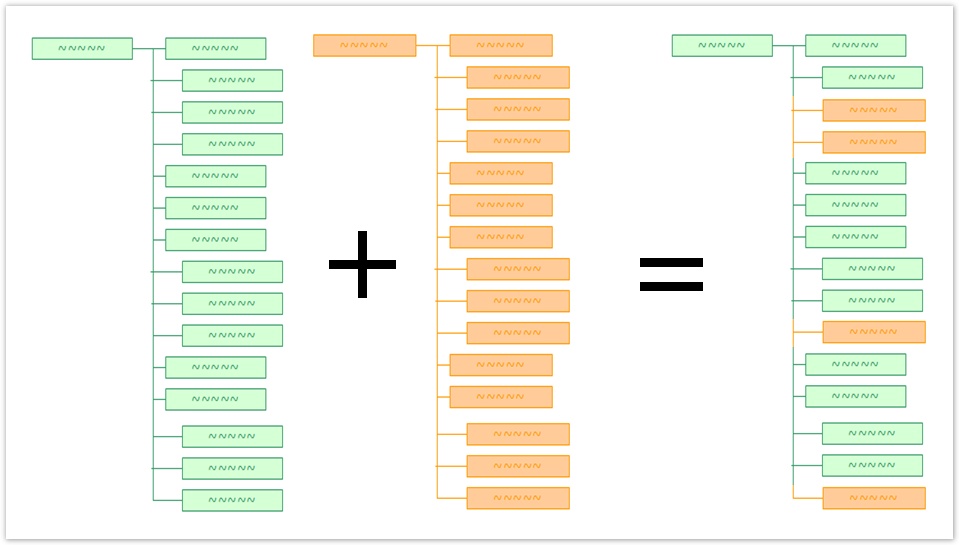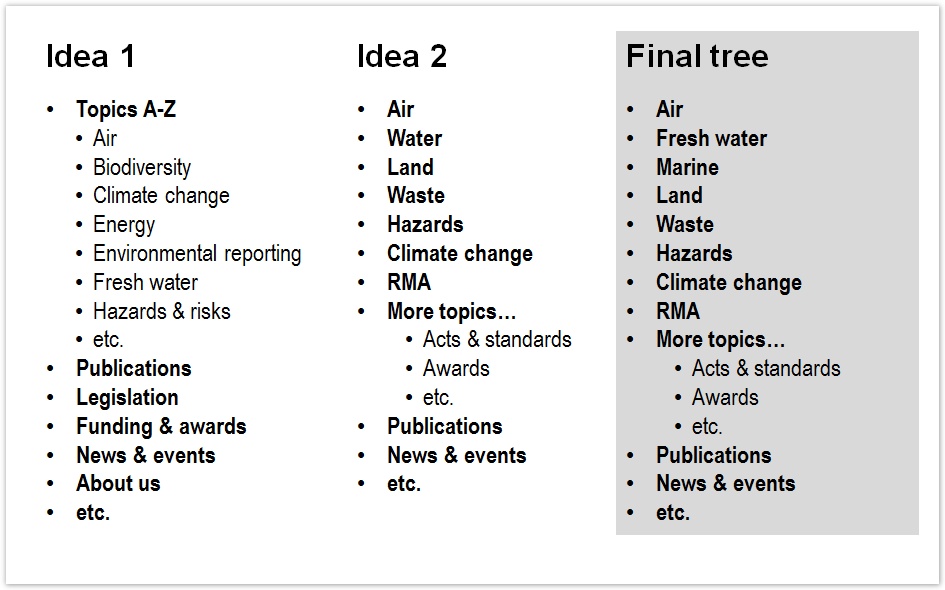...
- One tree is the clear winner, substantially outperforming the other trees. But there are a few elements of the tree that didn’t work well, and need to be rethought.
The other trees lost out, but our analysis may have identified certain elements in those trees that actually performed better than their counterparts in the winning tree. - No tree is the clear winner – they all had problems that kept their overall scores down.
Like the case above, though, we were able to identify certain parts of each tree that performed well and should be pursued if possible.
...
- If we have a winning tree, we keep its overall structure and try replacing its weak areas with the best ideas from the other trees.:
- If we don’t have a winner yet, we may need to create two or 3 hybrids to test in the second round, to see if we can come up with a winning structure.
- example
...
...
When the New Zealand Ministry for the Environment redesigned their website, that's exactly what they did. They tested the existing tree, then developed 2 new ideas for their site structure. While both of these ideas tested better than the original site, their final tree was actually a hybrid of the two ideas:
Note that this is not always possible, because some ideas are just not compatible with others. If tree A won the first round, but there are parts of tree B that did really better than their counterparts in tree A, it may not just be an easy copy-and-paste from B to A, because what worked in B may not work with the different approach that tree A takes.
- example
...
Which is why we heartily recommend retesting the hybrid tree to make sure everything works as intended.
...
Next: Rewording and replacing tasks
...

